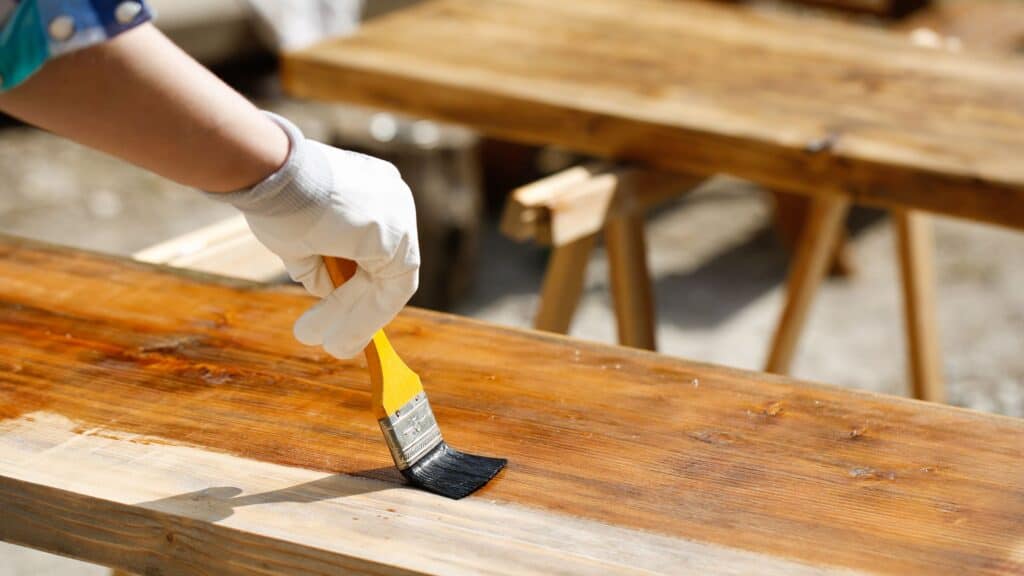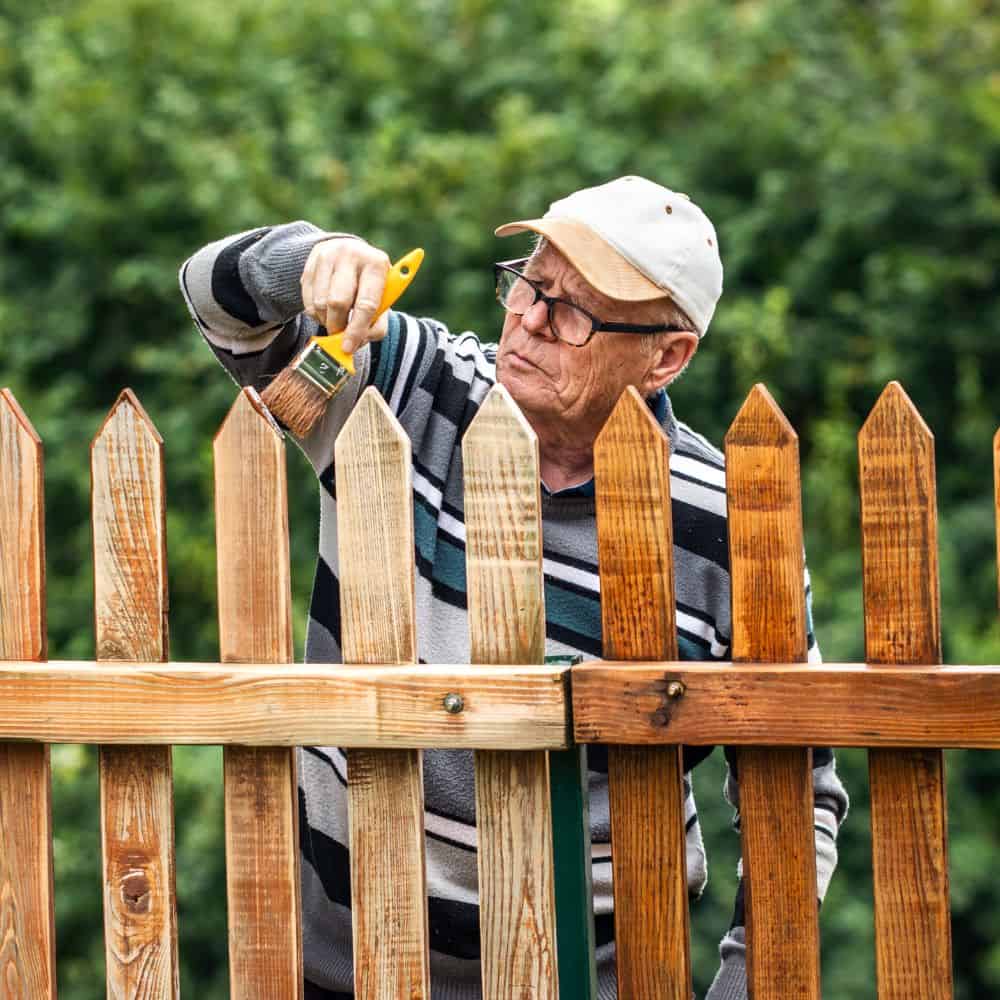In this article, we will compare varnish vs glaze for painting wood, along with the considerations that must be kept in mind when painting outdoors vs indoors!
Processed wood gives every garden or balcony a homely touch. Due to this, this type of wood is frequently used outside for terrace furniture, tool shelters, garden fences, and garden furniture.
But you need to exercise caution. The natural product must be appropriately painted to protect it from the sun, wind, and weather since it may occasionally be exposed to harsh weather conditions. This is where glazers and varnish come in handy.
Varnish vs Glaze: Is Glaze The Same As Varnish?
Varnish and glazer differ from one another in a few ways. Resins make up the varnish. Your wood appears smoother as a result. Although it helps to protect your wooden floor, it is not the best technique to increase your floor’s shock resistance.
Although it has a slightly different composition, the glazer is comparable to varnish in appearance. Harder and more effective resins are employed because flooring requires them. These are great polyurethane resins. Products that are more suited for professional use are referred to as sealers (glazers). A single or two-component sealer is a common name used for it.
The term “two-component sealer” refers to a sealer that can be paired with a “hardener” additive that is added right before the sealer is applied to the wood. Compared to varnish or single-component sealers, it produces a tougher finish. Although it is used only by professionals, this hardener element is extremely hazardous and will eventually disappear.
The glazer is a product that is especially well suited for defending wooden floors against daily impact like trampling. Generally speaking, parquet vitrification has no smell. Glazer is odorless until it has dried. You can use the glazer to protect unfinished, waxed, oiled, or vintage timber floors. You must sand and seal wooden floors that have been waxed, oiled, or are antiques.
It is advised to use an undercoat, the primer, to help the sealer adhere to your timber floor and maximize the advantages of your product. This primer can stop tannins from rising, which can leave your timber floor’s surface stained with dark spots. We’ll discuss primers shortly.
In summary, glazing and varnish don’t really differ that much. The glazer is a parquet varnish designed specifically for use on floors that is made using a high-performance, high-hardness resin.
Difference Between Glaze And Varnish – Why Use Varnish?

For processing wood, glazes and varnishes are available. Wood stains are not opaque coats like lacquers, but rather open-pored surface coatings. They should ideally reach very deep into the wood, shield it from the interior and the outside, and still allow the wood to breathe. A benefit of using a glaze instead of varnish is that the wood’s inherent grain is preserved better and even highlighted.
Wood varnishes, on the other hand, cover the natural coloring and grain of the wood and thus make it possible to paint wood in a colored and opaque manner.
You must determine for yourself if glazing or varnishing is the best option for you based on the desired outcome. Whether the wood will be utilized indoors or outside will determine what type of paint to apply.
Painting Wood Outdoors
The process is different for painting outside wood than it is for painting wood inside. Since it is a natural product, the weather has a greater impact on it. The primer is the next layer that is applied to the wood.
Why prime wood? The wood should be prepared beforehand if it will be exposed to wind and weather outdoors to prevent fungus, rot, and blue stain. Additionally, since the wood pores are sealed off and isolated, a primer shields against stains and imperfections. Apply glazes as you would when painting wood traditionally. To get a smoother surface, you can also apply the glaze in numerous coats.
The wood must be painted two to three times with the suitable wood preservative stain after being primed. For this, you can utilize glazes that are either water-based or solvent-based. The level of weather protection increases with the glaze color.
Painting Wood Inside
You can skip the priming stage indoors because the weather qualities are irrelevant. Use water-based wood stains indoors instead of solvent-based ones, such as when painting ceiling panels, due to odor production.
How To Apply Glazing Or Varnishing To Wood

You should first clean and smooth the wood because the glazes bring out the best in the wood’s grain. Pieces of 180 sandpaper are advised for use.
To ensure that the color pigments are evenly distributed, carefully stir the glaze at first. There are very thin, non-drip, and very thick glazes available. There is no right or wrong here. Choose the glazing with which you are most at ease. With a brush, glazes can be applied quite well. You should always paint in the direction of the wood grain. For the glaze’s final coloration and the greatest weather protection, 2-3 applications are required.
Tip: Use non-drip glazes or a wood preservative gel for “overhead work.”
What Brushes To Use For Glazing And Varnishing
There are brushes in a wide variety of colors and shapes for all areas of application. Clean and desired results can be achieved with the right brush and technique. Here are some tips for brushes based on your glazer or varnish:
- Brushes with natural bristles should be used primarily for solvent-based paints and glazes
- Brushes with plastic bristles are best suited for water-based paints and varnishes
Which Wood Does Not Have To Be Painted?
Fresh wood shouldn’t be painted because, despite the fact that it has theoretically dried, there is still liquid beneath the surface that needs to be removed. Larch is frequently purchased to fully forego painting. Alternatively, you can wait for a few years and relax.
With wood produced from Siberian larch, it may even be years before you need to pick up a brush. After a few years, if the wood has changed from dark gray to black, the primer, glaze, or paint penetrates the wood more readily.
